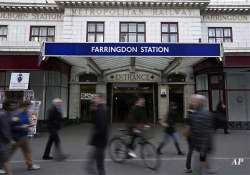World's first subway marks 150 years in operation
London, Jan 9: The world's first subway system marked its 150th anniversary Wednesday, with reports showing conditions way back when were much as they are today: Busy, congested and stressful for passengers."The constant cry, as

London, Jan 9: The world's first subway system marked its 150th anniversary Wednesday, with reports showing conditions way back when were much as they are today: Busy, congested and stressful for passengers.
"The constant cry, as the trains arrived, of `no room,' appeared to have a very depressing effect upon those assembled," The Guardian newspaper reported on the public opening of London's Metropolitan Line on Jan. 10, 1863. The first stretch of rail had opened the day before, on Jan. 9.
The line -- the first part of what is now an extensive London transport network that has shaped the British capital and its suburbs -- ran 120 trains each way during the day, carrying up to 40,000 excited passengers. Extra steam locomotives and cars were called in to handle the crowds.
Architectural historian David Lawrence said the rapid expansion of the subway network -- better known in London as the Tube -- had a major impact on the city's design. The Tube helped lure people away from the inner city into new areas where new housing was being built near the stations.
The houses were built in a village style mocked by some historians as already dated.
"They were selling an England which had already passed by that time," said Lawrence, a principal lecturer at Kingston University.
"The constant cry, as the trains arrived, of `no room,' appeared to have a very depressing effect upon those assembled," The Guardian newspaper reported on the public opening of London's Metropolitan Line on Jan. 10, 1863. The first stretch of rail had opened the day before, on Jan. 9.
The line -- the first part of what is now an extensive London transport network that has shaped the British capital and its suburbs -- ran 120 trains each way during the day, carrying up to 40,000 excited passengers. Extra steam locomotives and cars were called in to handle the crowds.
Architectural historian David Lawrence said the rapid expansion of the subway network -- better known in London as the Tube -- had a major impact on the city's design. The Tube helped lure people away from the inner city into new areas where new housing was being built near the stations.
The houses were built in a village style mocked by some historians as already dated.
"They were selling an England which had already passed by that time," said Lawrence, a principal lecturer at Kingston University.